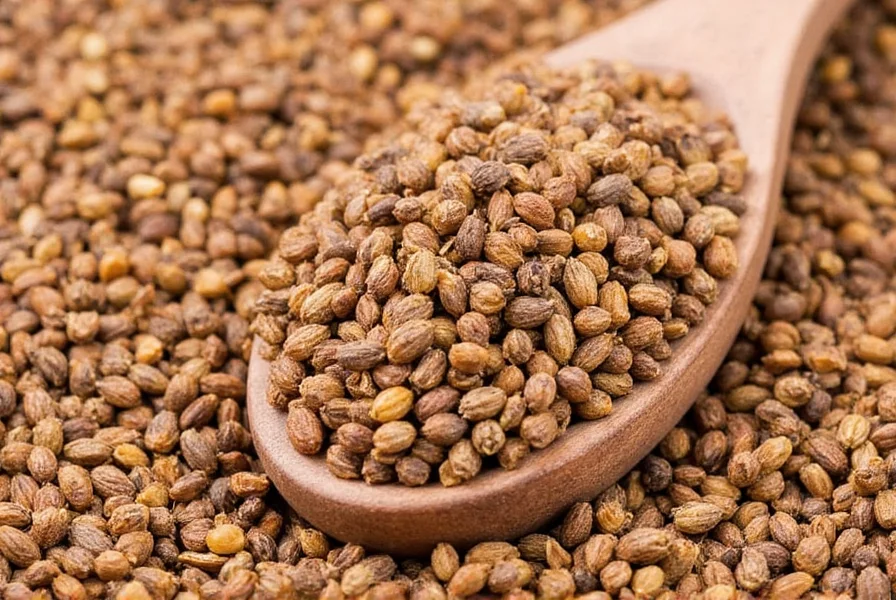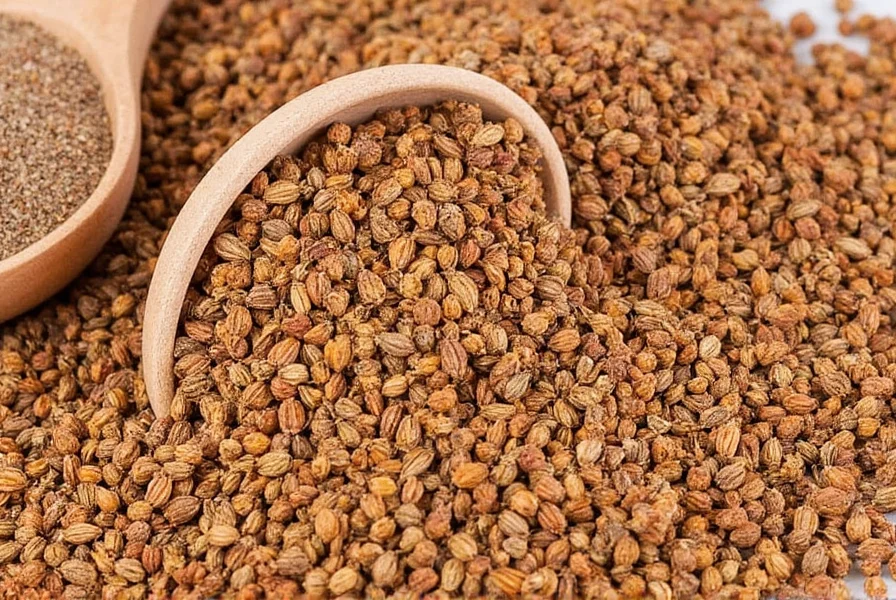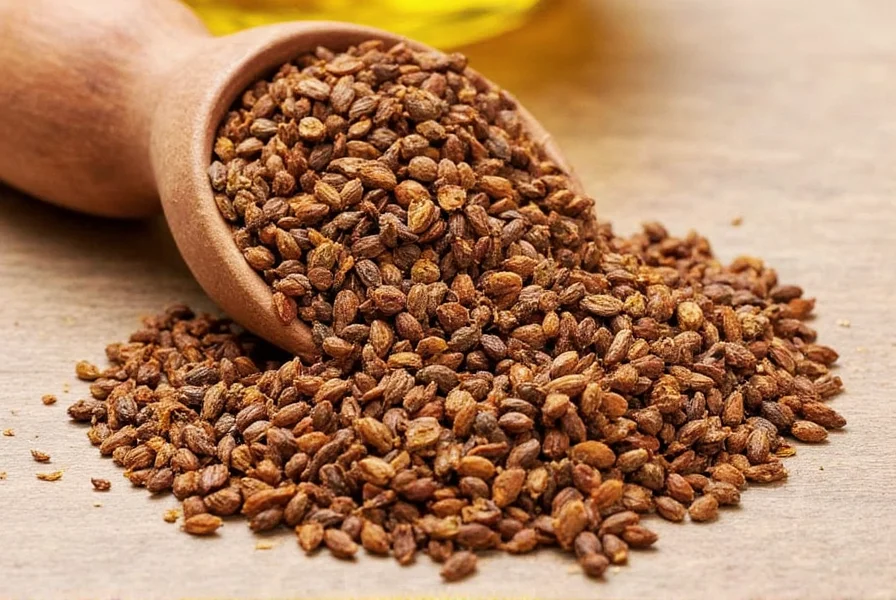
Understanding Whole Cumin: Nature's Flavor Powerhouse
Whole cumin seeds represent one of the world's oldest and most versatile spices, with archaeological evidence of their use dating back to ancient Egyptian and Indus Valley civilizations. These slender, boat-shaped seeds come from a flowering plant in the parsley family (Apiaceae) and serve as the foundation for countless global cuisines. When evaluating whole cumin versus ground cumin, the key difference lies in flavor preservation—whole seeds retain their essential oils and complex flavor compounds far longer than their ground counterparts.
Flavor Profile and Culinary Science
The distinctive taste of whole cumin comes from its chemical composition, primarily cuminaldehyde (48-55%), which creates that characteristic warm, slightly bitter, and earthy profile. When you toast whole cumin seeds, the Maillard reaction activates additional flavor compounds, transforming their citrusy notes into deeper, nuttier undertones. This chemical process explains why many professional chefs insist on using whole cumin seeds rather than pre-ground versions for authentic dishes.
Compared to ground cumin, whole seeds offer several advantages for home cooks:
| Characteristic | Whole Cumin Seeds | Ground Cumin |
|---|---|---|
| Shelf Life | 3-4 years (properly stored) | 6 months |
| Flavor Intensity | Bright, complex when toasted | Muted, one-dimensional |
| Culinary Control | Precise timing of flavor release | Immediate flavor impact |
| Texture Contribution | Subtle crunch in finished dishes | No textural element |
Global Culinary Applications
Understanding how to use whole cumin properly separates authentic regional cooking from imitations. In Indian cuisine, chefs typically add whole cumin seeds to hot oil at the beginning of cooking (known as "tadka" or tempering), allowing the seeds to sizzle and release their oils before adding other ingredients. This technique creates the flavor foundation for dishes like dal and biryani. Middle Eastern cooks often toast whole cumin seeds before grinding them for spice blends like baharat, while Mexican recipes frequently incorporate whole seeds into mole sauces for depth of flavor.
When exploring how to toast whole cumin seeds properly, follow these professional techniques:
- Use a dry skillet over medium-low heat
- Add seeds in a single layer without oil
- Shake pan frequently for even toasting
- Remove from heat when seeds become fragrant (about 1-2 minutes)
- Immediately transfer to a cool plate to prevent over-toasting
Optimal Storage Methods
The best way to store whole cumin involves protecting the seeds from three enemies: light, heat, and moisture. For maximum longevity, keep whole cumin seeds in an airtight container made of dark glass or opaque material, stored in a cool, dark cupboard away from your stove. Properly stored whole cumin maintains peak flavor for 3-4 years, significantly outperforming ground cumin's 6-month shelf life. To test freshness, crush a seed between your fingers—if you detect a strong, citrusy aroma, your cumin remains viable.
Nutritional Profile and Traditional Uses
While not a significant source of macronutrients, whole cumin seeds contain valuable phytochemicals including terpenes, phenols, and flavonoids. Traditional culinary medicine systems have incorporated cumin for centuries, primarily for digestive support. Modern research confirms cumin contains antioxidants and may support healthy digestion when consumed as part of a balanced diet. The iron content in whole cumin (providing about 23% of daily value per tablespoon) makes it particularly valuable in plant-based diets.
Practical Cooking Techniques
Mastering whole cumin usage elevates your cooking significantly. For authentic Indian dishes, add whole cumin seeds to hot oil until they darken slightly and become fragrant before adding onions. In bean dishes, adding 1-2 teaspoons of whole cumin during cooking reduces gas production while enhancing flavor. When making spice blends, toast whole cumin seeds first before grinding with other spices to preserve volatile flavor compounds. If substituting for ground cumin, use 1.5 times the amount of whole seeds (by volume) since grinding concentrates the flavor.

Common Questions About Whole Cumin
Can I substitute ground cumin for whole cumin in recipes?
Yes, but with adjustments. Use 3/4 teaspoon of ground cumin for every 1 teaspoon of whole cumin seeds called for in a recipe. However, for authentic flavor development in techniques like tempering, whole seeds provide irreplaceable texture and controlled flavor release that ground cumin cannot replicate.
How can I tell if my whole cumin has gone bad?
Fresh whole cumin should have a strong, warm, citrusy aroma. If the seeds smell musty, stale, or have lost their distinctive fragrance, they've degraded. Visually, high-quality cumin seeds maintain a uniform yellowish-brown color—seeds that appear faded or grayish have likely lost their potency. Properly stored whole cumin typically remains viable for 3-4 years.
What's the best method for grinding whole cumin seeds?
For optimal flavor, toast whole cumin seeds first until fragrant, then cool completely before grinding. Use a spice grinder or mortar and pestle for best results. Electric coffee grinders work well but must be completely clean and dry. Grind in small batches to prevent overheating, which can cause the essential oils to evaporate. Freshly ground cumin should be used within 6 months for best flavor.
Why do some recipes specify whole cumin instead of ground?
Recipes call for whole cumin when precise flavor timing and texture matter. In techniques like tempering (tadka), whole seeds release flavor gradually when added to hot oil, creating a flavor foundation for the entire dish. Whole seeds also provide subtle textural elements that ground cumin cannot, and they maintain their complex flavor profile longer during extended cooking times compared to pre-ground versions.
Does whole cumin offer any nutritional advantages over ground cumin?
Whole cumin seeds retain their nutritional compounds longer due to less surface area exposure. The grinding process accelerates oxidation of essential oils and phytochemicals. While the nutritional profile is similar when freshly ground, whole cumin maintains higher levels of antioxidants and volatile compounds over time. For maximum nutritional benefit, toast and grind whole cumin seeds immediately before use.











 浙公网安备
33010002000092号
浙公网安备
33010002000092号 浙B2-20120091-4
浙B2-20120091-4